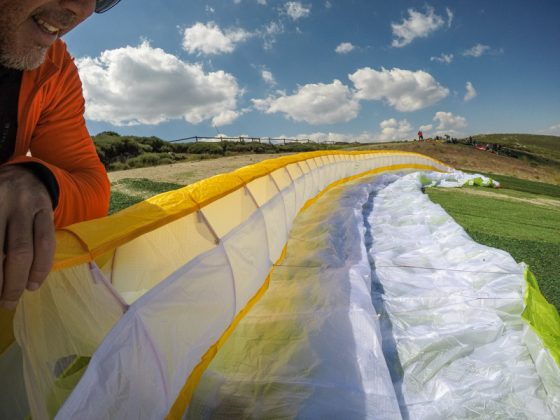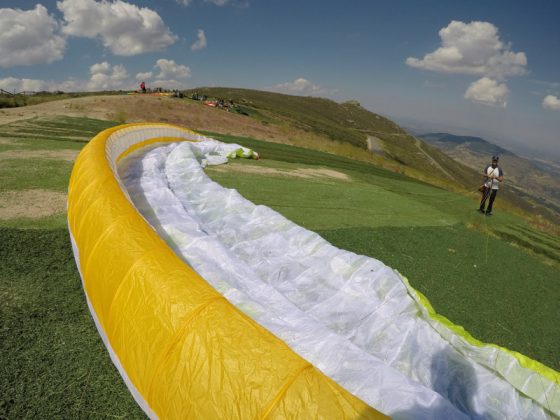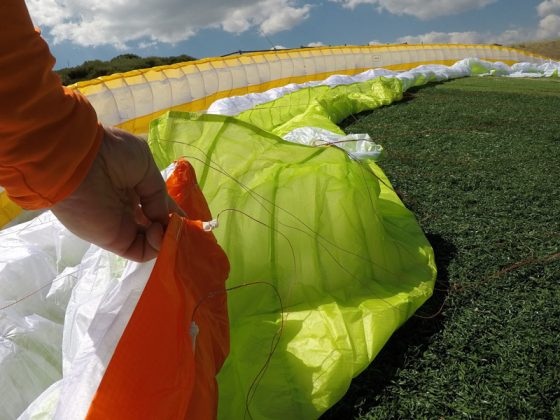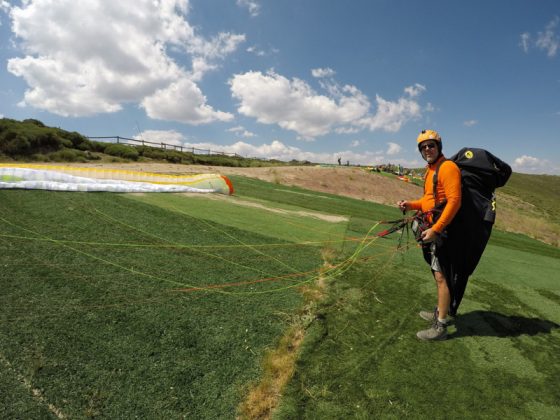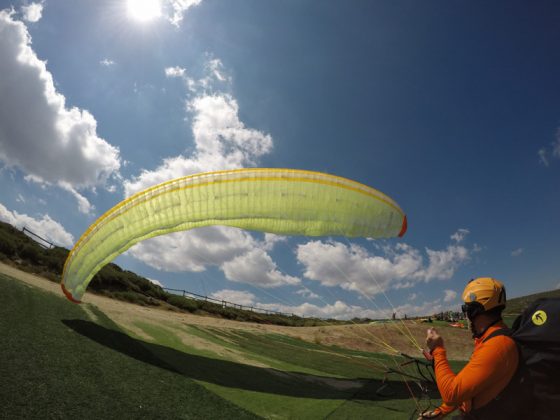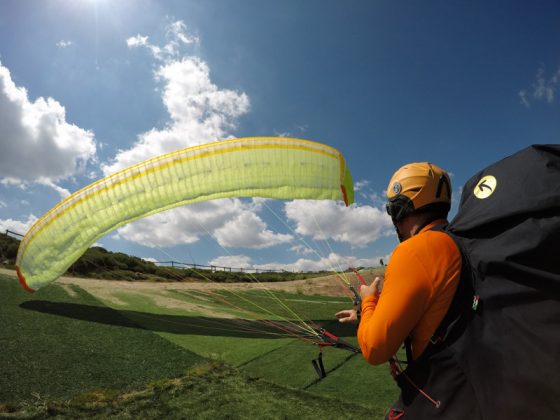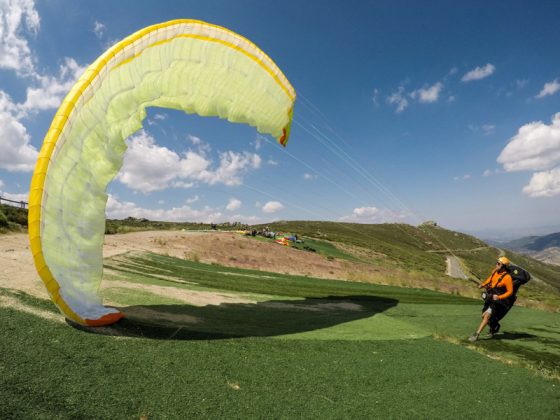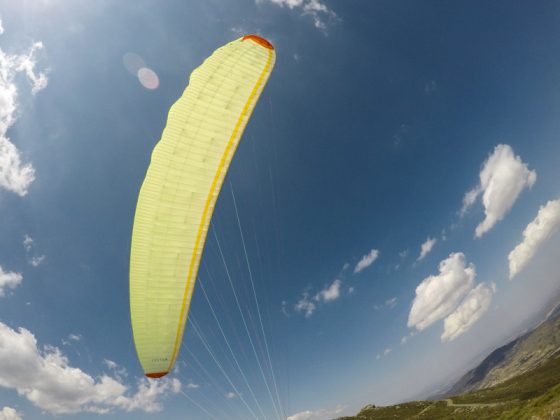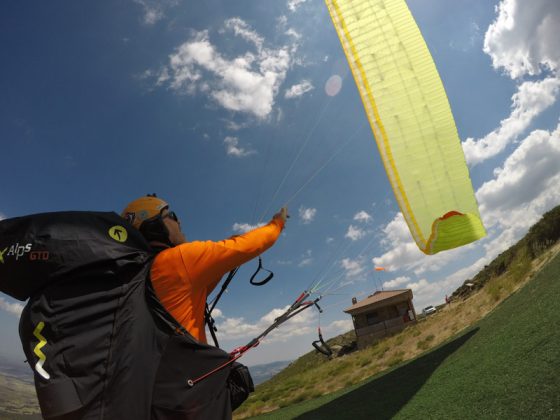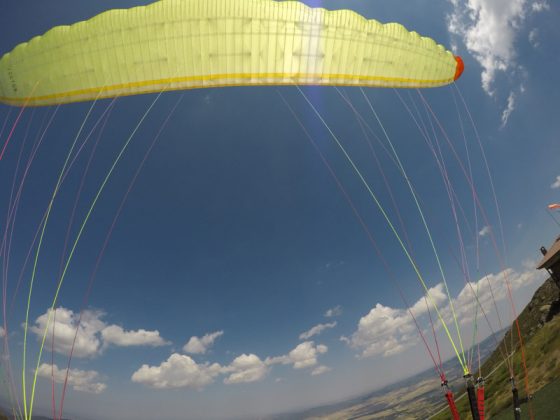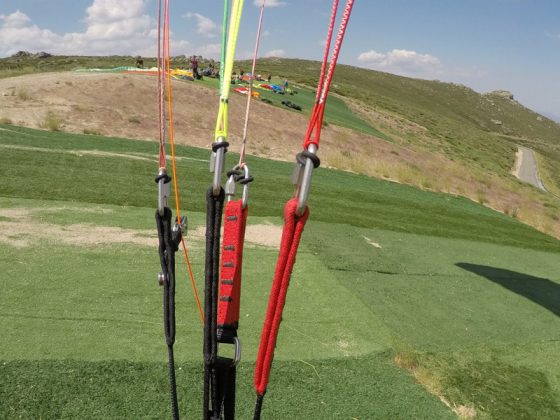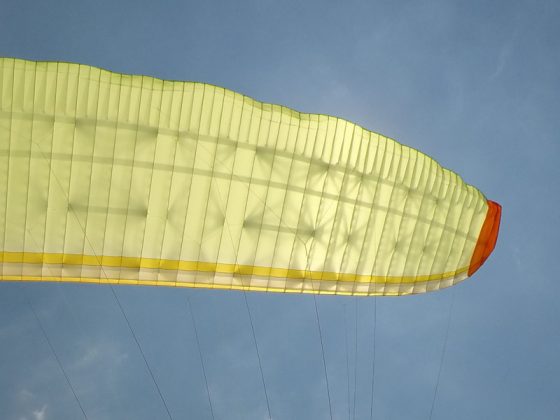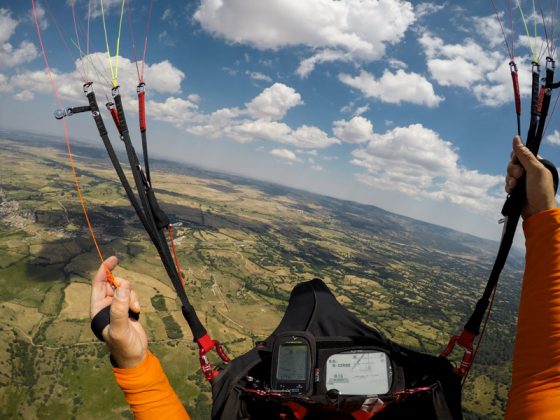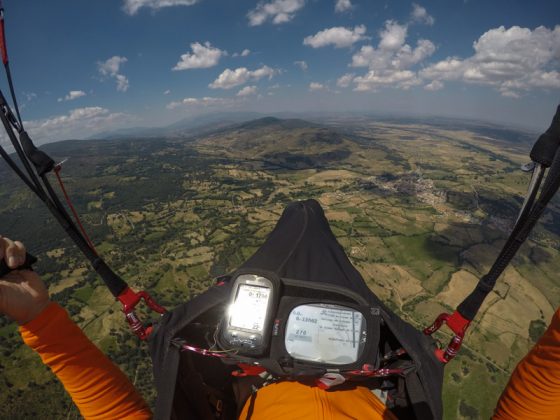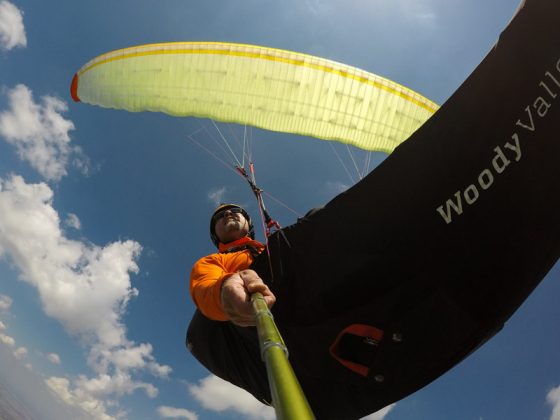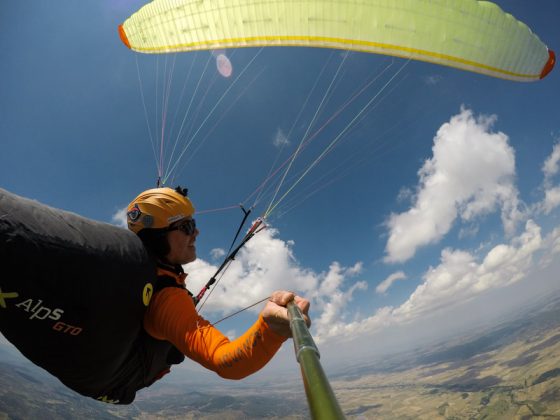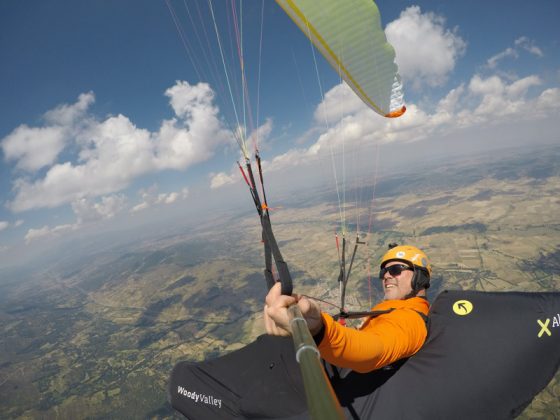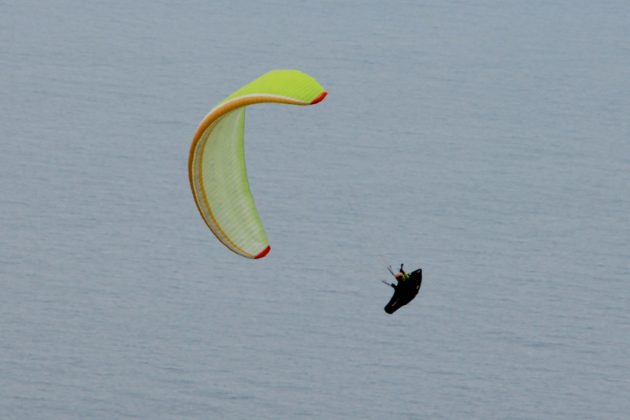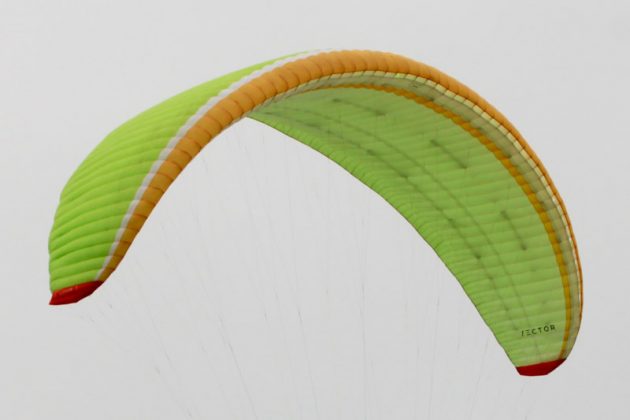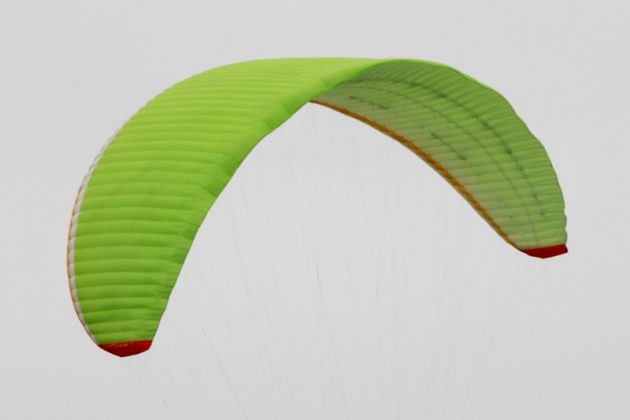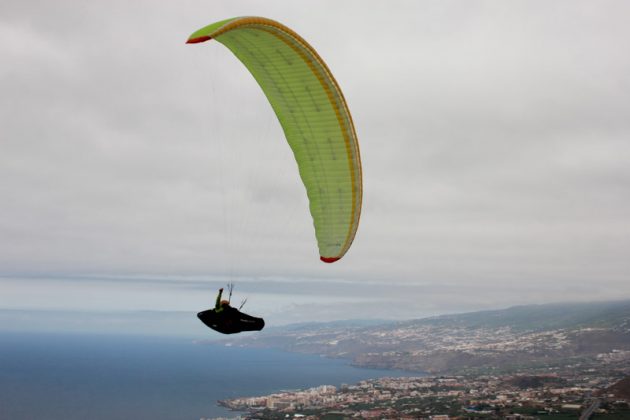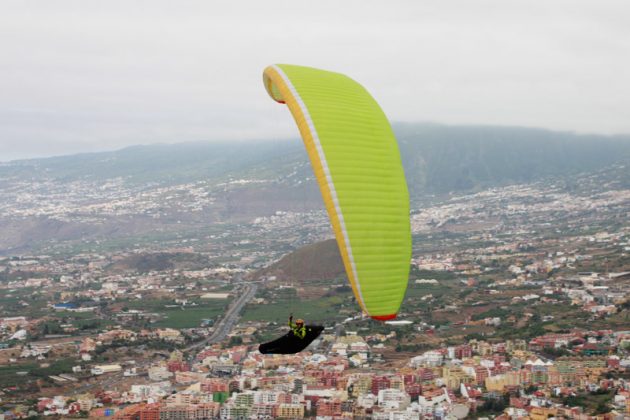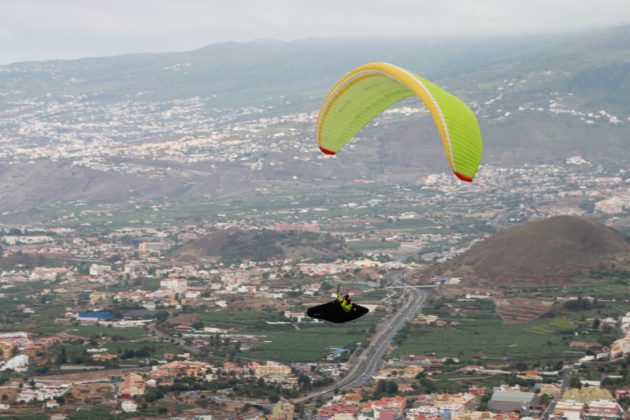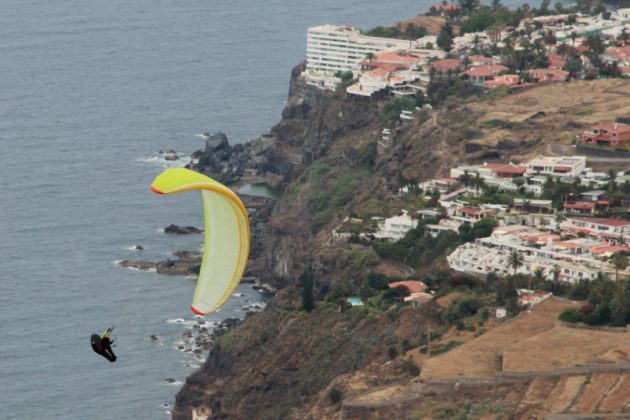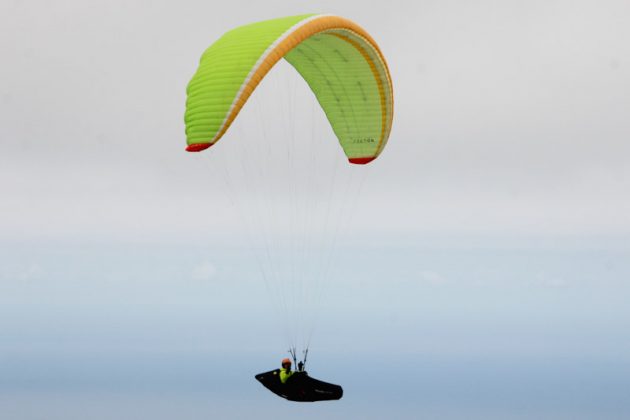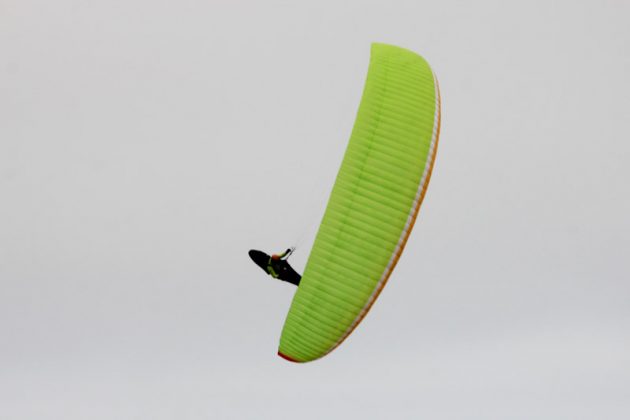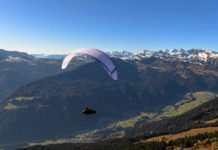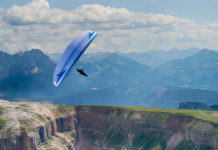The new EN C glider from the well-known Austrian manufacturer is a Sport class model tagged as “accessible”. This 3-line hybrid riser paraglider has a short aspect ratio for its category. It is a very light wing that wants to establish its positioning between the Mentor 5 and the Triton (high EN C). Truth is, the Sector felt pretty much like the Mentor series to me, though quite frankly, on steroids.
In fact, the maker announces between 0.7 and 0.8 more glide ratio points than the Mentor and even assures that it beats the performance of the Triton… My test flight of the Sector at Piedrahita allowed me to enjoy the very favorable features of the wing for thermalling and sport flying, and my briefing of the flights comes down to two words: easy and effective.
Design
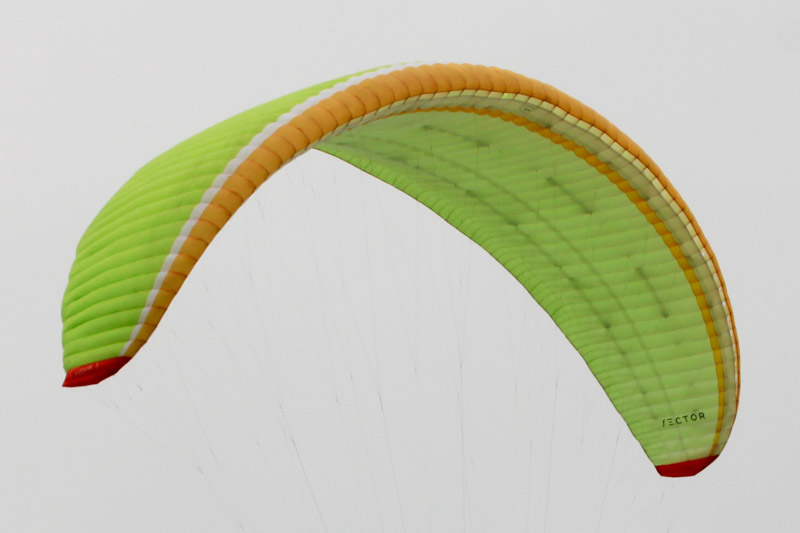
With aspect ratio of 5.92 (4.37 projected), 67 cells, and double 3D modeling in the front, the manufacturer used a combination of materials for the Sector that they say provide lightness and durability. Without complications, the inner design incorporates load straps and triple diagonals, leaving wires and reinforcements aside to avoid an increased final weight.
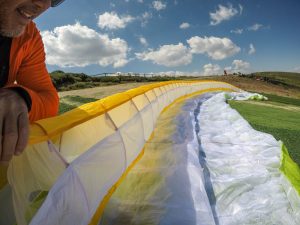
The lines have also been optimized. The risers are thin made of 12mm kevlar and Nova offers the option of installing “Speedbrake” risers, which allow the wing to be accelerated and slowed without pulling from the C lines, which “destroys” the performance. The brake line is located a bit ahead of the trailing edge, helping the wing be less deformed when braking and offering a more buffered feeling altogether, according to Nova’s designer Philip Medicus (read it here). The Sector is a light, compact to pack wing that can be very useful when it comes to Hike&Fly with a weight of 4.7 kg for the L size we tested.
Inflation and take-off

The initial phase of the flight is usually one of the critical moments, in particular when we are flying in thermal conditions. The Sector has an even intake of air and rises gradually in a controllable manner facilitating the maneuver and making you feel confident and safe.

Upon reaching the vertical, the glider holds its position well in the centre and the lift arrives strong, with a light trend to overshoot, which pushes you to gain speed accelerating the run.
Once airborne we confirm three interesting things: The Nova Sector transmits a soft pressure on the brakes, the lift is intense and the performance, high end, suits me serene. The Sector floats and glides a lot, yet at the same time it feels cushioned and friendly.
Accessible feeling in the Sport class
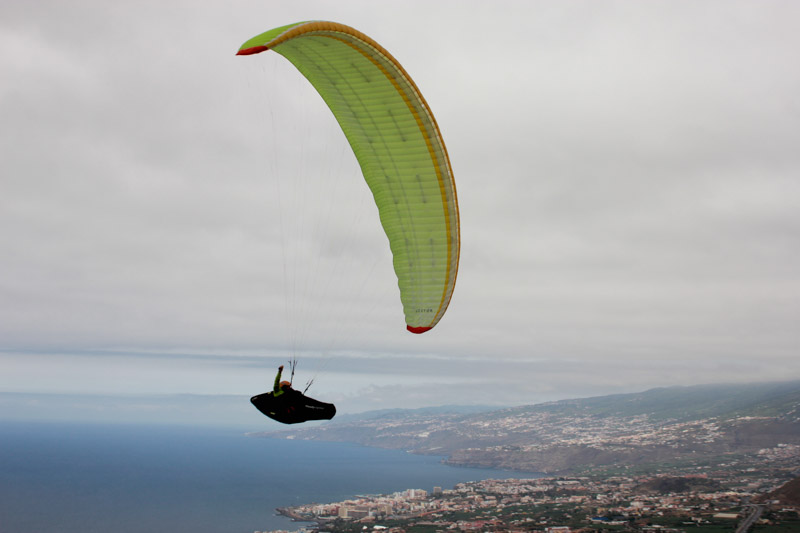
This model feels like and effectively reminds us of a high EN B, the reactions are predictable and together with the contained 5.92 points of aspect ratio, the wing works as a unit, all of which makes it predictable and easy to control. The Sector moves in a cohesive manner, it is dampened and a bit elastic as well. The entire wing holds the pressure, including the tips, without presenting excessive tension. These features make the Sector one of the most accessible paragliders of the Sport class available today. A small step, very easy to make, for pilots coming from an EN B like the Mentor 5.
Comfortable turn
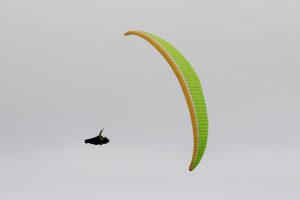
Nova´s new EN C has a direct and firm turn with an elastic touch. For pilots making their first step into the Sport category the wing offers a friendly piloting; though for the expert pilot, it will demand some adaptation. The Sector is not abrupt and absorbs turbulence in a great extent facilitating the pilot the management of the lift in turbulent air.
But make no mistakes, when I say dampened I don’t mean boring. The Sector has a feedback or command feel a bit buffered or less direct than other wings of its class, but its sporty turn offers great precision and it is very dynamic. Plus, the wing keeps a good cohesion and inner pressure. This formula ends up being very effective during long cross country flights, comfort with low levels of stress.
Lower aspect ratio – less performance?
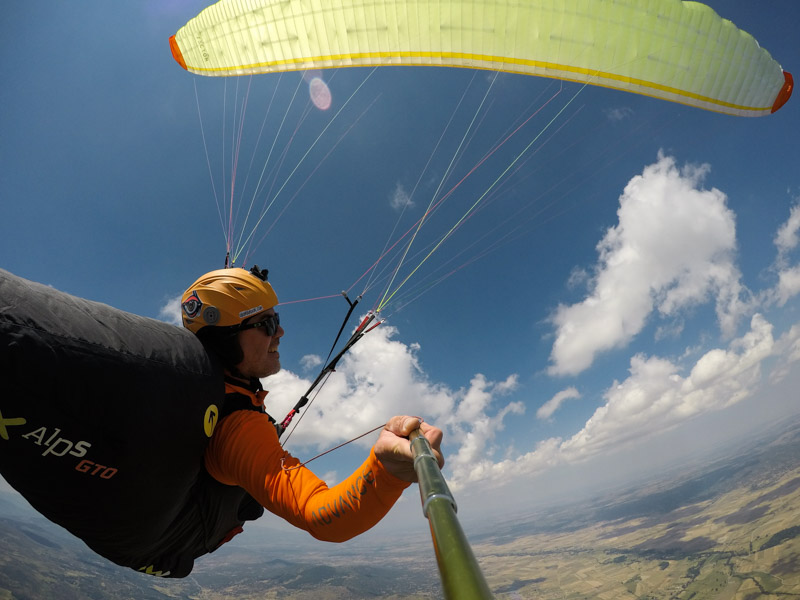
Today, the Nova Sector is (possibly) the paraglider with the least aspect ratio of the Sport class, this could be suggesting that it is also one of the least performing ones… But no my friends, let’s not get carried away by such simple notion. This model benefits from the entire experience and technologies that Nova developed for its best-seller model of the Club class, the Mentor 5. A good way of making a long story short could be that they’ve freed the M5 from the limitations proper of the EN B certification and brought the performance to its highest yield in what could easily be defined as a “super Mentor”.
Easy performance
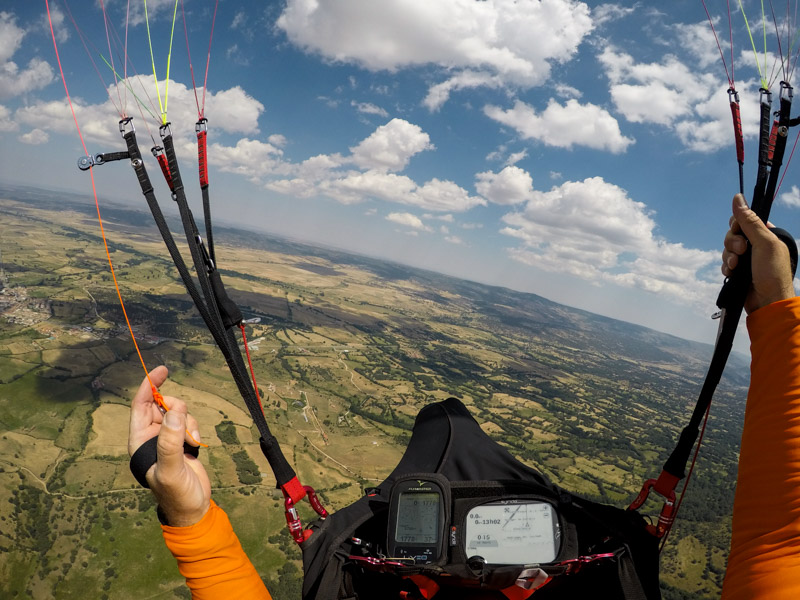
I made several flights with the Sector, including a bit of hillside flying and thermo hillside in a recreational plan, but enjoyed this glider the most at Piedrahita, one of Spain’s Meccas of long distance flying. The Sector allowed me to complete, without much difficulty, a good XC circuit with an early take off. At first, I had to deal with climbing the first morning bubbles. Trouble free, the Sector performed wonderfully in mild conditions.
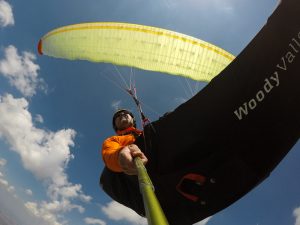
Though it ended up being the most difficult part, since I was getting acquainted with the glider’s piloting, I managed to get hold of the broken and mild bubbles available. As the day made progress the conditions became tougher, until I finally found good strong thermals, turbulent at times, with some good +7 m/s. Test approved! The Sector climbs very well, it keeps itself solid and compact. Basically, the turn is flatter and more performing than “freestyle” or dynamic; nevertheless, when you need it, this glider can hook onto the tiniest cores.
Performance
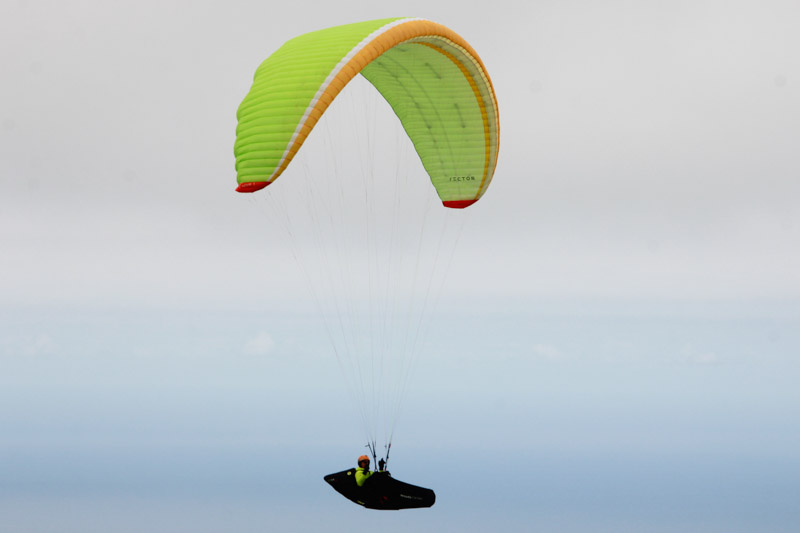
It’s hard to make an assessment on performance without having comparatively flown it close to other models as reference. My judgment regarding the performance of the Sector results from my sensations during the test flights.
Nova is a very prudent manufacturer who never offers figures regarding glide performance, it simply talks about improvements between such and such models. Concretely, they affirm the Sector rates higher than their high EN C wing, the Triton.
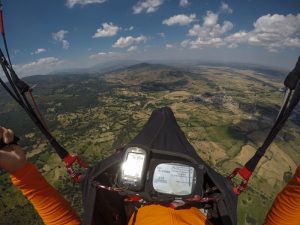
At the time of navigating the Sector offers great stability, going through the air in a clean and solid manner with great resistance to turbulence, and it is specifically effective when stepping on the bar half way down. An effectiveness barely degraded at full speed (around 54 km/h). I only missed steering with the back risers. The risers of the series version do not contemplate this option and if you pull the risers you end up eroding the glide. So, to optimize you performance you have to do it old school style, using the legs on the speed bar.
Without giving figures, the Sector felt completely competitive to me in the Sport category. When I say completely competitive I’m talking about a performance equivalent to the best EN C wings of the times, even those with a higher aspect ratio that are more impressive, but – without a doubt – one must point out the glider’s easy and comfortable handling.
Safety

The certifications represent a reference that must be considered, along with other indicators, as help at the time of choosing the most suitable paraglider for our level. The Sector is then a paraglider for expert pilots, but within this classification that defines the entire category, we could say the Sector is one of the most accessible gliders of the Sport class.
Maneuvers like front collapses, asymmetric collapses, big ears and 360 spirals are executed with the level of difficulty of a regular EN B wing.
The handling offers a degree of softness and dampening that makes it apt as your first C wing.
Conclusion

The Sector is a Sport class paraglider with a special personality, Nova’s bet for something different. A model that’s closer to a Club or EN B class wing for its piloting characteristics yet squeezing all the possibilities out of the performance and the current materials. In the end, they keep their vow to the premise performance and safety, making the Sector the perfect paraglider for the entire generation of pilots of the Mentor 5 and other progression EN B wings oriented to XC flying who are looking for a natural and safe step ahead in performance; a small step in terms of piloting yet huge in performance.
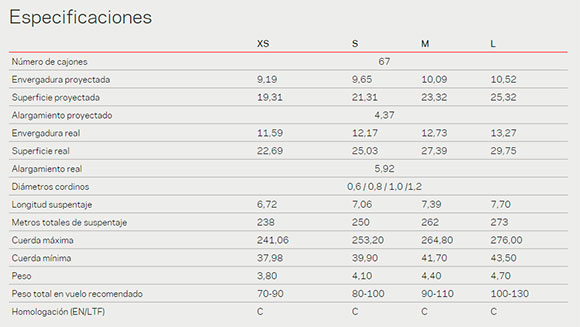
+Info: https://www.nova.eu/



